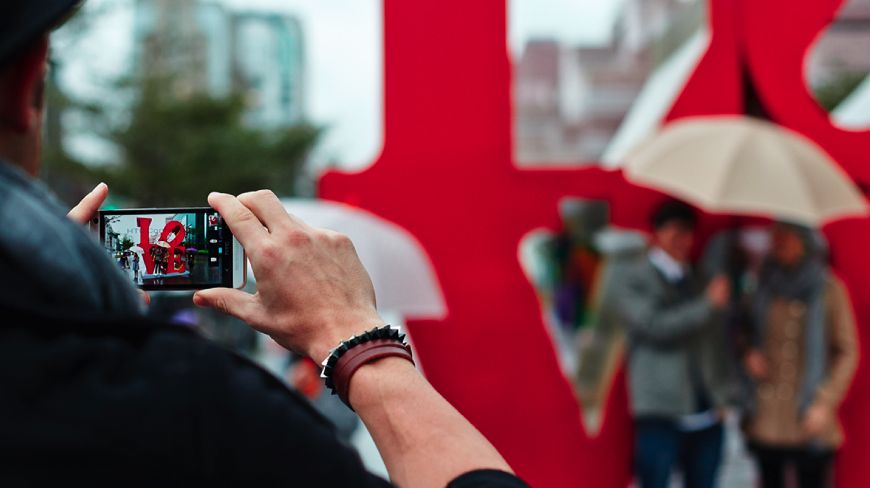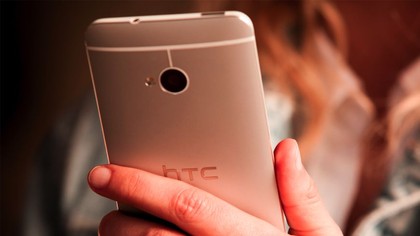What more will we see from the One's camera? HTC says a good deal
Musing on imaging with Symon Whitehorn

When the One was first announced, HTC highlighted a particular feature as markedly different from competitors' offerings: its camera.
Instead of cramming eight, 13 or 16 megapixels in the sensor, HTC declared war on pixel count when it decided to inject the One's snapper with a unique Ultrapixel sensor that's home to four large megapixels, a count that's decidedly low for a flagship phone.
The idea is to produce high quality images in even the lowest of light settings as bigger pixels (2.0 micrometer versus 1.1 micrometers found in 13MP sensors) take in more photons.
"I've heard people say we've created the best Instagram food camera," Symon Whitehorn, director of special projects at HTC, told TechRadar in a recent interview, drawing attention to the exact type of real-world situation HTC says most consumers use their cell phone cameras in nowadays.
We chatted with Whitehorn on the cusp of the One's U.S. availability, available at American carriers and retailers starting today, and touched on a number of topics related to the phone's camera tech and HTC's future imaging plans.
Camera issues
The One's release was marred by an initial delay, ironically caused by the very part that HTC is so keen on promoting.
The hiccup, which HTC's PR team insisted couldn't be commented on, was a public relations smudge and an issue that led to HTC's worst financial slump to date.
Get daily insight, inspiration and deals in your inbox
Sign up for breaking news, reviews, opinion, top tech deals, and more.
But with the phone finally becoming widely available, HTC and Whitehorn are setting out to remind people why they should bother with the One and its spec-defying camera technology.
"We're anti-useless megapixels," Whitehorn explained about HTC's thinking in choosing "just" 4MP.
"There's this unhealthy motivation with spec wars. Phones are reaching an ever-greater number in specs without that meaning anything.
"For too long the industry has been burdening the consumer with a meaningless metric. It's become the de facto measurement to judge quality in a camera."
This is a credo we've heard Whitehorn wax about before, and though the phone has garnered largely enthusiastic reviews despite its low pixel total, a few questions remain about what HTC plans to do with the tech moving forward.
We were curious about whether the company could add more megapixels yet still maintain low light quality should customers ask for a higher number to decrease image noise, an issue we encountered when we reviewed the One.
"The problem is you have to increase the sensor size, which means that changes the relationship with your lens," he explained about increasing MPs. "You have to get a bigger lens and other components and it makes the phone very big and heavy.
"We find our consumers want to have a slimmer product, and we'd have to look at those tradeoffs. We'd have to start reconsidering what we want to do if the phone becomes too bulky.
"We're not seeing a lot of need for [more pixels], but if we see a change take place, such as an uptake in 4K, we'll reconsider," he continued. "We're not wedded to any technology. We're not ruling that out, but we don't want to give the Ultrapixel up easily."
It certainly doesn't: According to Whitehorn, HTC wants Ultrapixel around for as long as possible.
"We're currently into the Ultrapixel technology," he said. "Will we use the same sensor in future phones? Probably most likely. We're also examining other types of sensors, but we're tied to this one for the time being."

Highs and lows
We learned last month that the One's camera tech could one day make it to lower-end HTC phones, and Whitehorn said expanding Ultrapixel across the company's product line is "of course down the road." There's even evidence such a phone is in the works as we speak.
Michelle was previously a news editor at TechRadar, leading consumer tech news and reviews. Michelle is now a Content Strategist at Facebook. A versatile, highly effective content writer and skilled editor with a keen eye for detail, Michelle is a collaborative problem solver and covered everything from smartwatches and microprocessors to VR and self-driving cars.
